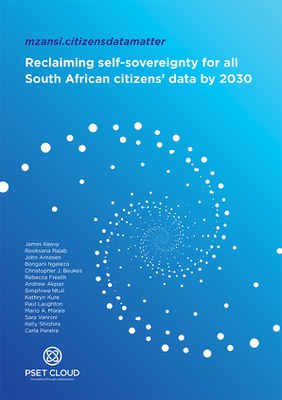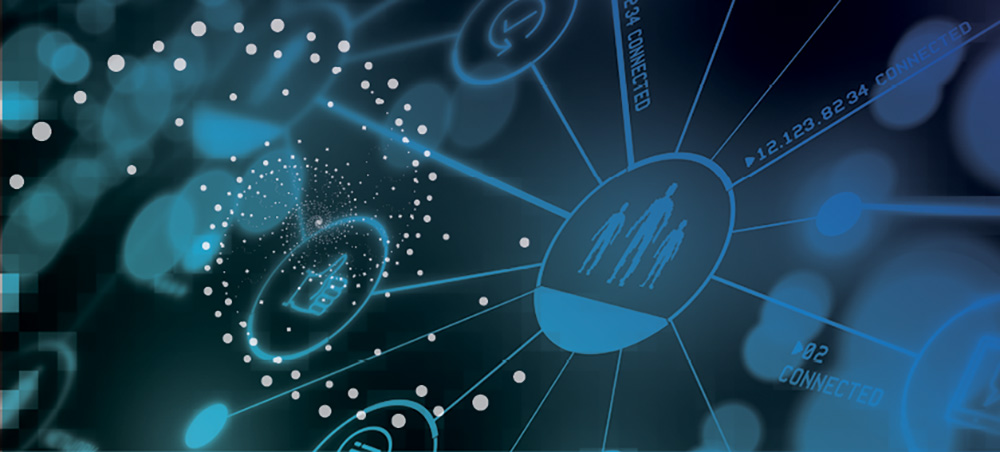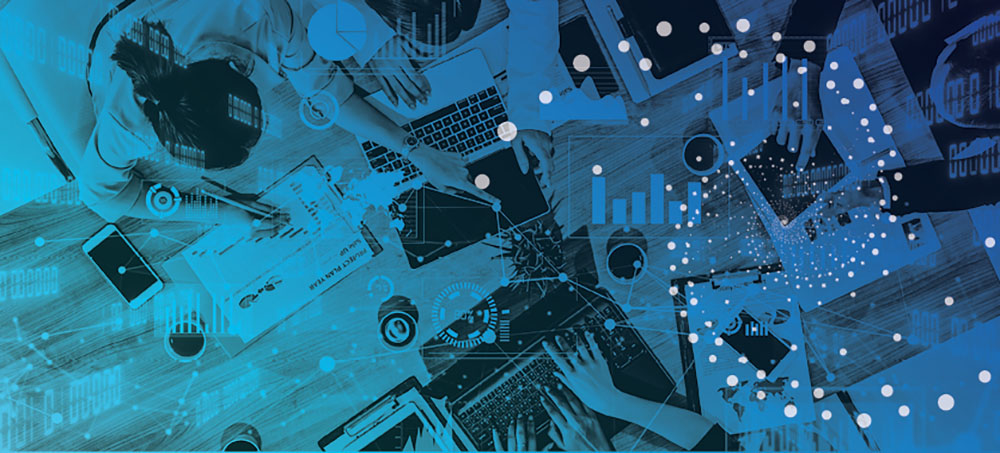mzansi.citizensdatamatter
 Download the full publication here
Download the full publication here
Introduction
South Africa is a country of many contradictions. With a Gini coefficient estimated at between 0.63 and 0.7 in 2021, the country is the most unequal in the world (International Monetary Fund [IMF] 2020). Many of its citizens are unemployed: Statistics South Africa (2021) found that the official unemployment rate was 32,6% in Quarter 1 of 2021, 34,9% in Quarter 3 of 2021 (Quarterly Labour Force Survey [QLFS]) further exacerbated by the Covid-19 pandemic. Young people (15-34 years) are disproportionately represented in these numbers, with 43,6% not in employment, education or training [NEET] (Ibid). In this same country, sophisticated financial systems are internationally respected, with new technological innovations being developed and utilised through cryptocurrencies, increasingly new forms of credentialing (Rajab et al, 2019; Dale-Jones & Keevy, 2021), and linked to these developments, also new forms of digital governance (Manda 2017; West & Beukes, 2021). This juxtaposition, combined with the impetus of post-pandemic recovery initiatives, poses a unique opportunity for a reset of the education and training system to be more open, fairer, and critically, founded on the principles of self-sovereignty (Tapscott, 2021).
This paper contains a set of case studies contributed by a diverse range of authors as part of a crowd-authored initiative that took place between December 2021 and January 2022. The call for contributions was limited to experts and partner organisations that have been directly or indirectly involved in a national digital platform initiative, called the Post-School Education and Training Collaboration for Learning Opportunities for the Utilisation of Data (PSET CLOUD). The PSET CLOUD is a platform that aims to enable users such as learners, government, industry, NGOs and education institutions to share and use data for decision-making that promotes a more efficient and responsive post-school education system. The PSET CLOUD was initiated by the Manufacturing, Engineering and Related Services Sector Education and Training Authority (merSETA) and JET Education Services. The platform development is taking place as a national initiative under the oversight of the Department of Higher Education and Training (DHET), and with close proximity to the South African Qualifications Authority (SAQA), Umalusi, the Quality Council for Trades and Occupations (QCTO), and the Council on Higher Education (CHE). The platform development had been underway for four years at the time that this paper was prepared, and has involved key partners and subcontractors, such as the Council for Scientific and Industrial Research (CSIR), Reos Partners, COOi Studios, Kaitoma Creatives, and JumpCO. A detailed theory of change underpins the PSET CLOUD and has undergone several iterations. The overall impact statement reads as follows: ‘South African citizens make informed labour market decisions that lead to increased employment in line with NDP targets’.
The PSET CLOUD is overseen by a steering committee composed of senior management representatives from JET and merSETA. An external advisory group provides guidance at key intervals, while a wide range of stakeholders have been involved in the development of a series of future scenarios.
This paper consists of eight vignettes, followed by a concluding section. Each vignette has been contributed independently and they do not necessarily link to each other in a logical sequence. Four key questions do however run across the contributions:
-
How can the South African education and training system be reset in a way that allows it to leapfrog many of its contemporaries?
-
How can the key ideals of open, fair, and self-sovereignty be realised?
-
What developments are already in place that can be strengthened and combined?
-
What new governance models exist, and how can they be realised in the South African context?
As authors we invite robust engagements with our contributions and trust that this paper will provide an important anchor point for discussions addressing unemployment in South Africa through the development of digital platforms. We strongly advocate that these discussions are underpinned by an awareness of and respect for individual data privacy rights, enhanced interoperability across data systems, and new thinking on the recognition of learning through digital credentialing.
Vignette 2 | Grounding data self-sovereignty on free open source software solutions
Bangani Ngeleza

The choice of software platforms for the pursuit of self-sovereignty is an important part of ensuring the optimal appropriation of its value. Free Open Source Software (FOSS) solutions present opportunities that not only extend the concept of sovereignty beyond data to also include the underlying software, but also have a range of other relevant benefits, some of which are outlined briefly below. Not only is FOSS affordable to obtain, but it also has many cost advantages on total cost of ownership (TCO). The availability of the source-code for instance means that organisations are able to make adaptations without needing to pay for the services of the company that developed the software. The absence of licensing costs also contributes to lowering the TCO. In addition, the relative stability of FOSS resulting from a large community of developers eliminating errors means the costs of support are low (Cassell, 2008).
Open standards in software development are a contributory factor to the use of FOSS and are most beneficial to governments which tend to consume huge amounts of information whose optimal value is realised when it is readily accessible to citizens (Hwang, 2005; Simon, 2005). Open standards allow for a modular development of FOSS solutions, meaning that there is no need to rely on one software provider for the total solution, but rather, it is possible to combine software from different sources, thus limiting vendor lock-in (Simon, 2005). Open standards supporting FOSS can also be beneficial for the development and sharing of educational resources by educators (Pfaffman, 2007), an important factor for developing countries.
There are several researchers who have shown that the security achieved with FOSS exceeds that achieved with proprietary software (Mosoval et al., 2006; Sherif, Zmud & Browne, 2006; Hwang, 2005; Drosdik, Kovacs & Kochis, 2005; West & O’Mahony, 2005). According to these researchers, this is due to the open availability of the source code in FOSS, allowing more people to view it and to detect and correct errors. The frequency with which FOSS updates are made available to the public also contributes to improved security as it allows for developers to test the software well ahead of its final release. For instance, a survey of Linux development by Evans Data found that 92% of their Linux systems had never been infected with a virus and 78% had never been cracked (Simon, 2005).
The fact that users of FOSS have access to the source code makes it possible to adapt this form of technology innovation to local requirements (Cassell, 2008; Mosoval et al., 2006). The South African government can benefit from general public licence (GPL) based FOSS solutions because these can be adapted and modified in order to suit any local conditions, including local languages and culture (Mtsweni and Biermann, 2008; Mutula, 2007). FOSS allows users who require certain additional features to be implemented to do so without hindrance (Bjorgvinsson & Thorbergsson, 2007; Hwang, 2005; Simon, 2005). There is an example of a Luganda web browser developed in Uganda called ‘Kuyangirizi’ which has been translated from the Mozilla browser. A Zulu version of OpenOffice is available in South Africa. These local language versions are examples of how FOSS can be geared towards supporting developing countries to create technology products that fit their specific needs (Camara and Fonseca, 2007). A further benefit specifically for developing countries is that FOSS can result in the development of a domestic ICT support industry that can provide employment opportunities. It enables developing countries to bridge the digital divide (Cook & Horobin, 2006; Mutula, 2007).
Vignette 3 | Conceptualising self-sovereign identities
Paul Laughton

Self-sovereign identity, also known as SSI, is a digital identity movement that enables individuals to control their identity without intermediary authorities. This enables interaction with the same freedom and trust as one is accustomed to in a conventional offline environment. Self-sovereign Identities ultimately allow individuals to control how their identities are managed on a global level (Sharma, 2020). The traditional centralised identity systems have several security weaknesses and do not support user control. Self-sovereign identity was proposed as an attempt to provide user control and a secure model for managing identities. Traditional centralised models have a number of drawbacks, such as potential loss of data due to common hardware or device malfunctions (Shuaib, Alam, Alam, & Nasir, 2021).
The proliferation of information in the digital economy has led to the fragmentation of identity data currently experienced among numerous online identity repositories. The average person has their data distributed among various governmental, financial, and social data hubs. This can cause complications such as duplicate entries, mismatches, and outdated data, in addition to the challenge of maintaining all these different identity repositories. Added to this, a lack of universal standards and interoperability among the identity repositories makes it challenging for people to store, obtain, remove, or share their personal data (Soltani, Uyen & An, 2021). Nowadays, the digital virtual online and physical worlds have become increasingly interconnected, highlighting the necessity and importance for a self-sovereign identity (Shuaib, Alam, Alam, & Nasir, 2021). Currently popular user-centric designs have turned centralised identities into interoperable federated identities with centralised control, while also allowing some level of user consent about how to share an identity (and with whom). Although this an important step toward true user control of identity within self-sovereign identities, it is nevertheless only one step (Allen, 2016).
There is a significant need for self-sovereign identities, since governments and companies share an unprecedented amount of personal information, while processing and cross-correlating everything from viewing habits to purchases, to where people are located during the day, to where they sleep at night, and with whom they associate. In addition, technology allows for greater access to human rights and to the global economy for Third World countries, who are looking to digitisation and adoption of technology in the 4th industrial revolution. When effectively implemented, self-sovereign identity can offer such benefits, while also protecting individuals from the ever-increasing control of those in power (Allen, 2016).
Historically one of the first references to identity sovereignty occurred in early 2012, when developer Devon Loffreto wrote about ‘Sovereign Source Authority’', stating that individuals ‘have an established right to an “identity”’, but that national registration destroys that sovereignty. At the same time, Patrick Deegan began work on an open-source framework that gives users control of their digital identity and their data in decentralised systems called Open Mustard Seed (Allen, 2016). Due to political differences, self-sovereign identity has begun to influence and feature in international policy. One significant event that has largely created interest is the refugee crisis that has beset Europe (2015), resulting in many people lacking a recognised identity due to their flight from the state that issued their credentials (Allen, 2016).
True user control is the heart of self-sovereign identity, a term that is increasingly popular in fields where user data is required (e-government, e-commerce, health, etc.). An important feature of self-sovereign identities is that users become the rulers of their own identity rather than merely advocating that users be at the centre of the identity process (Allen, 2016). Self-sovereign identity is the next step beyond user-centric identity and that means it begins at the same place: the user must be central to the administration of their identity. User consent is a key focus requiring interoperability of a user’s identity across multiple locations, with the user’s consent, along with true user control of that digital identity, collectively creating user autonomy. To ensure this, a self-sovereign identity must be transportable; not restricted to one site or locale. However, it must be acknowledged that that identity can be a double-edged sword — usable for both beneficial and harmful intent. To achieve its aims, an identity system must balance transparency, fairness, and support of the commons, with continuous protection of individuals (Allen, 2016).
Vignette 4 | Case study: European Blockchain Service Infrastructure
Simphiwe Ntuli

The European Blockchain Service Infrastructure (EBSI) is an initiative by the European Commission and the European Blockchain Partnership that aims to connect Europe by delivering cross-border public services through the use of blockchain technology (Verbeek et al., 2021). At the heart of this initiative is self-sovereign identity (SSI) which is being used to implement a Self-Sovereign Identity model in Europe, allowing users to create and control their own identity across borders (Pastor, 2021) without having to rely on central authorities (Dávila, 2020). To achieve this, the European Self-Sovereign Identity Framework (ESSIF) was developed with the objective to create and define standards for European Self-Sovereign Identity as well as provide the necessary supporting capabilities based on EBSI infrastructure with a focus on identities of natural persons and legal entities (Dávila, 2020).
In terms of how the objective is meant to be achieved, the following factors have been identified as key to success in this endeavour:
- Definition of specifications and guidelines for technological components of ESSIF: EBSI wallet, ledgers (public and private), Identity HUB, Trusted Issuers Registries, application programming interfaces (APIs) to access diverse services, etc.;
- Definition of trust and governance frameworks: ESSIF Trust Framework, ESSIF Governance Framework;
- The creation of the core services and minimal reference implementations for capabilities;
- The design and provision of flows for the different processes that can take place: the creation of identity, issuance of Verifiable Credentials (e.g. Verifiable IDs, Verifiable Attestations), sharing and verification of Verifiable Presentations, etc.;
- The interaction and alignment with the broader SSI market/ecosystem.
Subsequently, in late 2021 EBSI ran a multi-university pilot which encouraged early adopter member states to test their solutions in a real life setting. The pilot ran for four months ending in November 2021 (Fillis, 2021). The goal of the pilot was to:
- Allow member states to test the interoperability of their solutions with other key actors in the ecosystem;
- Allow for the exchange of verifiable credentials by students and universities: trusted accreditation organisations; trust issuers; holders of credentials; wallet providers and other partners;
- Demonstrate that the EBSI can implement cross-border verification of educational credentials based on Self-Sovereign Identity (SSI) principles;
- Show that a verifiable attestation (such as a diploma) issued by one member state can be verified by a university or third party, an employer for example, from another member state.
According to the European Blockchain Partnership quarterly meeting held on 9th – 10th December, the pilot was a success. Willeke, from the City of Amsterdam and graduate from Saxion University of Applied Sciences in Netherlands successfully applied for a Master’s degree in Spain from the University of Rovira i Virgili using her Verifiable_ID, aligned to eIDAS, university and her Bachelor degree completed at Saxion University (Martin, 2021). The pilot successfully demonstrated cross border interaction using the decentralised paradigm, verifiable credentials, and self-sovereign identity provided by EBSI and ESSIF, and the source of trust provided by the blockchain ledger, all in a decentralised way thus avoiding profiling, preserving citizens identity and fully empowering citizens with real ownership and control over their identities and data in an easy way, thanks to ESSIF conformant wallets (Martin, 2021).
In contrast with what is happening in Europe, Africa is lagging behind. Europe is at a stage of piloting their solutions, having done the groundwork and established the collaborations, legal and technical frameworks, and developed standards along with regulation and policies. However, there have been some developments in the space of SSI in South Africa with entities such as the Financial Blockchain Consortium (SAFBC) and BankservAfrica working towards the realisation of SSI in the country. BankservAfrica, with the support of PwC, has been facilitating discussions with banks (Absa, Capitec Bank, Standard Bank, FNB, Investec and Old Mutual), FinTechs and government to explore the building blocks for a digital identity programme to unpack critical success factors in realising a holistic digital identity programme for South Africa (BankservAfrica, 2021). The outcomes of these discussions, together with results from international case studies, surveys, interviews and focus group discussions, found that:
- A digital identity is key to the growth of a digital economy.
- A trusted and secure digital identity will improve online transactions.
- Consumers will gain social and economic benefit.
Furthermore, it became apparent that, due to the critical role of identity management in the 4IR, there is a growing need for the roll-out of a digital identity programme in South Africa. For the benefits to be realised and the impact on the economy to take full effect, the digital identity policy at government level and the development of integrated solutions by businesses need to be a high priority for all stakeholders (BankservAfrica, 2021). As a result of their findings BankservAfrica and their community of partners are moving to phase two of their initiative, which involves (Hamilton, 2021):
- Business stream to establish the commercial model that works for all participants while keeping the end-user consumer top of mind.
- Governance stream for building trust and governance and to establish the participation rules, the minimum requirements and ensure a healthy, mobilised ecosystem.
- Technology stream that will involve creating a sandbox for community members to test use cases and to test their Digital Identity solutions for interoperability, different attributes and technology skills.
As a member of this community Absa has already declared in the public space that they want to introduce SSI in their organisation (Pillay & Mouton, 2021). As an industry leader, Absa is positioned to influence forward progress within the SSI space in South Africa. Further, as one of the top four banks in South Africa, their interconnectedness with institutions in South Africa and across the rest of Africa can only serve to benefit the SSI development process.
Vignette 5 | The importance of widespread adoption via grassroots networks
Mario Marais and Sara Vannini

The journey to widespread adoption of any ICT for Development (ICT4D) initiative can use different approaches. High level networks between entities concerned with self-sovereign identity has been discussed. The importance of individual decisions for open, fair, self-sovereignty has been emphasised. A key issue for self-sovereignty, though, is the role of grassroots networks to make people aware of the choices they can make on an individual level, which remains an understudied area. Awareness creation and the diffusion of ideas, concepts and practices, i.e. adoption, is a space in which “‘intelligent intermediaries” (Gopakumar, 2007), ‘social connectors’ (Díaz Andrade & Urquhart, 2010), ‘infomediaries’ (Gomez, Fawcett, & Turner, 2012) and, especially, ‘local champions’ (Renken & Heeks, 2019) have played a large role. The focus on champions can either be intensely individually based, or more nuanced and placed in a community context. Choice exists to prioritise the individual’s actualisation versus their loyalty towards being part of a community. A pertinent question here is whether the idea of champions as single individuals, or a shift to a more collective role of championship may be a better fit for this kind of development initiative.
In a recent paper, Marais and Vannini (2021) argue that more attention should be paid not only to the family of ICT4D approaches that follow bottom-up, participatory strategies in ICT4D (e.g.: Bentley, Nemer, & Vannini, 2017; Heeks, 2010), but also to possible differences in value systems and frameworks that leverage communities’ self-organisation, and that build on existing relationships within and between communities rather than relying solely on single individuals. In the communities, these existing relationships may already have resulted in innovation, development, and social transformation. Because they are founded on existing and enhanced social capital (Marais, 2012) facilitated by shared value systems, they may be more resilient and sustainable over time.
Marais and Vannini (2021) propose a network approach that builds on existing grassroots experiences and that scales up community-level development initiatives already led by a variety of actors, including local champions and less visible individuals, as well as Non-Governmental Organisations (NGOs), Faith-Based Organisations (FBOs) and Community-Based Organisations (CBO)s. Intentionally enabling networks within the systems in which ICT4D projects operate requires adopting a relationship based and social capital approach as one of the foundations for sustainable development. The practice of ‘network weaving’ (Holley, 2013) is therefore proposed, combined with adoption of the value system on which it is built (Marais & Vannini, 2021).
The concept and practice of network weaving was started by June Holley (2013a; 2013b) to help low-income entrepreneurs in the Appalachian region in Ohio, one of the poorest regions of the U.S., create networks that would bring opportunities and social change to their communities. According to Holley’s framework (2013b), networks are complex sets of relationships among people and communities. Networks have the ability to address power imbalances both by encouraging intentional peer relationships which recognise the value and contribution that individuals can make, and by considering every individual to be a potential leader in the network, who has the ability to connect and initiate collaborations. In this way, ‘power is distributed, not concentrated’ (ibid., 10). Finally, the framework recognises inclusion of all stakeholder voices in the process of generating change as an important way to redistribute power. The potential of network weaving to complement and advance the development approaches advocated in this article are summarised below.
First, network weaving focuses on co-creation processes and on all stakeholders’ participation. Networks include diverse stakeholders, each with their different perspectives. Stakeholders are like nodes of networks, and, in network weaving, they are organised in a non-hierarchical way. Having a network mindset, then, implies decentralised decision-making and collective action, requiring that local communities participate in development strategy decisions that are usually made by governments and large organisations. A network mindset requires contextual development strategies, where the diversity of interests is represented, and where the space is held for multiple ways of achieving outcomes in which indigenous knowledges, various value systems, and so-called expert knowledge can interact and evolve.
Second, network weaving expands on the relevance of intermediaries, infomediaries, and champions that has already been established in the literature. By stating that anybody can be a network weaver, the focus on leadership is transferred to a shared, collective idea of ‘championship’, which is more inclusive, more sensitive to collective dynamics and value systems that are more widespread in non-Western communities, and possibly more sustainable in the long term. This different idea of leadership is especially relevant when it comes to focusing on women’s participation in development leadership. Women who are leaders and champions are frequently overlooked. For example, schools in South Africa rely heavily on women teachers, yet school principals are overwhelmingly male (Skosana, 2018).
Third, network weaving is empowering for communities, not only because they have more access to decision-making and to lead the change they want to see, but also because it enables them to be aware of the networks they are embedded in, and of the power they have to influence decisions. This increased awareness brings with it more exposure to a plurality of ideas and more peer learning, which contributes to promoting community empowerment, and, ultimately, more agency.
Finally, the approach emphasises the role of ICTs in development as tools (not agents) to foster transparency and to achieve social justice (Smith, 2014). A network approach encourages sharing by default, including not only sharing outcomes and approaches from different projects, but also sharing networks themselves, so that they can grow and evolve. Networks are inherently flexible: they often lack defined boundaries; they have great potential to grow. This natural evolution of networks is beneficial to ensure dissemination of good practices: while projects can come and go, and academic findings seldom reach communities outside of researchers’ own influence spheres, networks’ learning exchanges at the community level can be self-sustaining as new members become involved.
Vignette 7: The state of play of self-sovereign identity in the Netherlands
Carla Pereira

Like many other countries worldwide, self-sovereign identity (SSI) is on the rise in the Netherlands. In the Netherlands, the Ministry of the Internal Affairs and Kingdom Relations, the policy manager for the Dutch (digital) identity infrastructure, published a vision statement, Digital Identity, and therein confirmed that the Dutch government sees an active role for itself in creating trust in the digital world for citizens and businesses and recognised that having reliable data is crucial for this to happen. However, its own position and policy regarding SSI and how this relates to the vision statement on digital identity was vague. Noting the growing call from Europe and the private sector for the Dutch government to take a clear stance on digital data exchange, the Dutch government commissioned INNOPAY and TNO to undertake a study to analyse the current initiatives around SSI and digital data exchange and its implication for the Netherlands. Drawing on desktop research, online surveys from market parties and several interviews with stakeholders and experts in the SSI field, this exploratory study analysed the Dutch SSI playing field, (inter)national developments and future development directions and its impact on public values.
According to this study, there are many SSI trial initiatives (experiments) in the Netherlands, but the landscape is fragmented. More than 90 organisations are directly or indirectly active in the Dutch SSI playing field, classified in one of four categories: SSI Users, SSI Suppliers, SSI Knowledge Suppliers, and Partnerships and Standards Setting Institutions. Critical mass has not (yet) been achieved by individual suppliers of SSI solutions. SSI ideas are not (yet) mature enough for large-scale use in society. Limited source data availability and limited reusability in other domains forms a barrier to value creation. The various pilot initiatives are showing the potential of SSI, but there is little cooperation between the different initiatives, leading to a fragmented field in both the private and public sectors. There are competing ideas about the best interpretation of SSI, also because certain essential concepts are not yet properly evolved. Organisations still focus mainly on the development of their own products, and to a lesser extent on collaboration and interoperability with other initiatives. Many parties are reluctant to disclose and use data via SSI, which also explains why a critical mass has not yet formed.
There is a lack of clarity on how the different legal frameworks that are being developed relate to each other. Consequently, large commercial parties often move faster than legislative developments, resulting in their domination and disruption of the market. The participants in the field argue that lack of clarity around the developing legal frameworks hampers further scaling up of SSI. This is because the frameworks deal with different aspects of digital data exchange. When the legal frameworks have been established, new legislative pathways to contain power and manage competition may be necessary.
The following recommendations were put to the Dutch government for consideration for making SSI a reality in the Netherlands:
-
An integrated vision linking the Dutch digital identity landscape and data exchange to an ambitious implementation agenda is necessary. It will need to European developments around the EU Digital Identity Wallet into account and ensure that both private and public users, can realise the social value of digital data exchange in the shortest possible time.
-
Drive public-private cooperation towards consolidating a harmonised and interoperable digital data exchange field by bringing the knowledge and expertise of the 90+ parties already experimenting with SSI to work towards further upscaling. Additionally, this best practice will need to find its way to the bodies in Europe working on the further detailing of the EU Digital Identity wallet.
-
For the government to break through the chicken-egg problem for digital data exchange by proactively making source data available via 'digital agents' and/or 'data at the source’ interaction models, and use source data for validation and optimisation of its own business processes. By doing so, the social value of digital data exchange can be realised.
Clearly, the challenges of implementing SSI in South Africa are not unique to developing countries. The analysis in this report has shown that the technology and ideas surrounding SSI are not mature, even in developed countries such as the Netherlands. There are still many unanswered questions that must be crystallised before SSI can fully deliver on its promises, but it seems to be on the right trajectory. The recommendations put forward in this study for the Dutch government should be considered for South Africa as we are experiencing the same challenges, perhaps to a more significant degree.
Vignette 8 | Credential fluency: measuring human ability in a brave new world
James Keevy and Kelly Shiohira

In a new era of machine learning, algorithms and strong artificial intelligence (AI) that may soon be able to pass the infamous ‘Turing test’, a measure of whether a machine or programme exhibits behaviour which is distinguishable from human behaviour, measuring human ability has become all the more important (Shiohira et al, 2021). Of course, this intent to measure and recognise ability has preoccupied humanity since long before the advent of AI. Dating back to the Middle Ages, and even much earlier ancient civilisations, specialised career structures, craft guilds and the early development of university structures in the eleventh century could be described as the antecedents to contemporary concepts of competency, lifelong learning, qualifications, and also jobs and careers (Keevy et al, 2021). As in Huxley’s classic 1932 novel, we use the metaphor of a brave new world as we look to the post-pandemic future. In this future, we argue, emerging technologies will, for the first time in human history, make it possible to measure and recognise human ability in a more seamless and articulated manner than has been possible until now (Spencer-Keyse, Luksha & Cubista, 2020; UIL, 2020).
This contribution draws on a wide range of current initiatives that, in one way or another, touch on the application of technology to the measurement of human ability. The perspective is largely African in its origin, but the scope and the scale of collaboration is global. The contribution is presented as a meta review of three main initiatives that the authors are directly involved in, and not as new empirical research. The first initiative included in our review is the development of the African Continental Qualifications Framework (ACQF) (Keevy et al, 2021) with its potential to become a new generation framework, in some ways following the emergent thinking embraced in the Credential Framework for the United States (Rein 2019, cited in Keevy, Rein, Chakroun & Foster, 2019). The ambitious undertaking in South Africa to develop a fully interoperable data ecosystem for the post-schooling sector (Rajab et al, 2020), currently in its fourth year, is a second source. The third initiative we draw on is an international collaboration on new qualifications and competencies that started as recently as December 2020 and builds on similar work within the European context (UNEVOC, 2020; Euler, 2021). Additional research and tangential publications are also considered. Our intention is not to repeat the findings of these initiatives, nor to specifically present condensed summaries, as these can be found in the source publications. What is of interest to us is how the initiatives come together on a new canvas to paint a landscape that we will broadly refer to as ‘credential fluency’.
Drawing on the findings of our meta review, we will argue that in order to achieve credential fluency, a more interdisciplinary approach is needed (Herrera, Teras, & Gougoulakis, 2020), an approach that builds on the current interplay between trends in three sectors: education and training, proxied through notions of learning outcomes and qualifications; technical vocational education and training (TVET), proxied through notions of competencies and, more recently, new skills (Independent Commission on the College of the Future, 2020); and the world of work, proxied through workforce readiness and data-driven recruitment. In some way, the three initiatives included in our meta review resemble these three sectors, although we would be the first to point out that the last sectoral analysis, the world of work, is also the weakest. From our work in South Africa and Africa, the paucity of research from an employer perspective is a limitation, but this seems to be a concern globally (Knox, Wang & Gallagher, 2019). An important cross-cutting concept, although not defined in the same manner, is that of human ability.
In brief, we view credential fluency as a future state wherein human ability is measured and recognised in a seamless and digital manner. In our view, credential fluency has the potential to build on the interplay between new thinking in education, TVET and the world of work and, as such, presents a new, unified model. Such an emerging interdisciplinary model will be able to draw on the tenets being developed in each separate discipline; but, to quote ancient Greek philosophy, the whole can be greater than the sum of its parts. In our view, the development of new technologies, specifically AI, makes it possible to have this conversation for the first time. The foundational constructs needed to be in place to move towards increased credential fluency, as identified from our meta review, are listed and briefly elaborated below. The more detailed discussions will be elaborated in the full paper.
The first construct we have identified is interoperability, specifically semantic interoperability. As noted by Shiohira and Dale-Jones (2019:22), drawing on Morales and Orrell (2018), ‘interoperability is the ability of discrete computer systems or software to exchange and make meaningful use of shared data or other resources’. In practice this will mean that data can be used and processed in different applications by different users. Various frameworks exist for interoperability, the most well-known and most widely used being the Data Commons Framework (Goldstein, Gasser & Budish, 2018) which captures ‘both the technical and the societal elements of an interoperable system, as well as the relationships between them, and serves as an important tool for understanding the hierarchies implicit in the development (infrastructure, standards and semantic architecture) and use (interactions between organisations, policy, broader society and individual users) of an interoperable system’ (Shiohira & Dale-Jones, 2019:23). Semantic interoperability provides a more focused interpretation of the construct. Drawing on the linguistic notion of semantics, in this case, the emphasis is on consistency of meaning, relations between items and generally, the ability for metadata to be read more constantly and reliably by machines (Ibid.). In the context of this contribution and its focus on credential fluency, semantic interoperability is a necessary precondition for more seamless and digital ways to measure and recognise human ability; importantly, this approach must focus on both technical and societal elements.
A move towards greater interoperability may, in our view, very well be a precondition for credential fluency, but the construct itself also raises ethical concerns about data privacy and ownership. This, we argue, is the second foundational construct that must be understood and further developed. In modern day society, citizens have limited control over their own data. Third party applications, both private and public, aggregate to massive data lakes which are, paradoxically, centrally owned, lack portability and with limited interoperability (Dale-Jones and Keevy, 2021). In our view, and drawing on an increasingly large research base, the future trend is towards decentralised, peer-to-peer data exchange systems wherein “no one party controls the relationship with the other” (Preukschat & Reed 2019, cited in Dale-Jones & Keevy, 2021:4). The notion of self-sovereign identity (SSI) is often used as an example of such an emerging new trend (US Chamber of Commerce Foundation, 2020). Building on this thinking, there is a definite emergence of a rights-based approach to data ownership that in some cases even extends to the proposition that connectivity in itself should be a human right (Murahwi & Ntuli, 2021). Considering huge inequalities globally related to internet access, and the deepening of the same as demonstrated during the pandemic as online learning and working became more mainstream, continental and global efforts to address data privacy and ownership concerns are critically important (Dale-Jones et al, 2020).
The third and remaining precondition for credential fluency is a common taxonomy for the measurement and recognition of human ability. Such a taxonomy does not have to replace well-developed nomenclatures and concepts across education, training and the world of work, but, as a global interdisciplinary community, we need at least a translation device. In the education and training context, qualifications frameworks represent an attempt over the past three decades or more to leverage the increased use of learning outcomes to describe knowledge, skills and competencies. In the world of work, we note conversations about workforce readiness and, increasingly, also the use of technology to match humans with jobs, not to mention jobs that do not yet exist. Semantic interoperability is well aligned to the construct of common taxonomies, and so too, to the international discourse on data privacy and ownership. Moves towards developing consensus on some of these constructs, such as the Beijing Consensus on AI and Education (UNESCO, 2019) and also, from an African perspective, the ACQF (Keevy et al, 2021), are pointing in the right direction, but will, in all likelihood, require many years to consolidate into something as ambitious as global agreement on connectivity as a human right.
In summary, our contribution attempts to navigate uncharted waters as we imagine a new world wherein human ability is measured and recognised more seamlessly and more digitally. We argue that this can only be realised through an interdisciplinary approach, and in a context wherein semantic interoperability, data privacy and ownership, as well as more common taxonomies are prioritised, jointly developed, and agreed on. In this brave new world, the Turing test may be less important as machines and algorithms better serve humanity by measuring and recognising human ability in ways not possible before.


Concluding comments: building agency
Rooksana Rajab
The PSET CLOUD is an ambitious project, as noted in the 2020 Power of Data publication (Rajab et al 2020):
Recognising that data is central to a technology-driven world and that the protection of an individual’s data has fast become a reality for all citizens, the level of engagement to build trust between citizens, governments, civil society, and companies must take centre stage (Rajab et al, 2021). In the main, the adoption of new technologies may impose considerable challenges to data protection and privacy. Citizens must be sufficiently informed of their rights to data privacy, if we are to create a truly empowered and democratic nation. It is important to rethink our model of engagement with citizens and their data so that they are confident in how their data is collected, collated, protected, interpreted and used. PSET CLOUD must explore models of engagement with citizens, and especially those that live in deprived communities. While self-sovereign identity (SSI) holds the key to the protection of data where each individual owns their own data through blockchain technology, a process of inclusivity of all citizens must remain a leading principle so as to not alienate users.
Apartheid’s spatial legacy regarding poverty and deprivation remains one of the greatest challenges confronting South Africa (Noble et al, 2014). According to Planes-Satorra and Paunov (2017), people from ‘deprived communities’ typically face a combination of three drawbacks. Firstly, they face a structural disadvantage where they lack the skills or influence to shape their environment in a meaningful way. Secondly, they face a relational weakness where they have limited access to accepted mainstream support mechanisms such as finance, advocacy and entrepreneurial networks. Finally, they face systemic barriers including ‘discrimination in the labour market’. These factors contribute to the alienation of a large proportion of our society and continued high unemployment rates in South Africa. The UNESCO 2021 report Reimagining our futures – A new social contract for education emphasises that ‘technology is not neutral – it can frame actions and decision-making in ways that divide and reshape the world as well as human understanding and action’.
While one of the main objectives of the PSET CLOUD initiative is to strengthen collaboration across the system through the establishment of an effective shared data and services platform, issues of inclusivity especially of deprived communities must be carefully considered. Additionally, the platform’s analytical capability is expected to be enhanced by linking it to other data sources such as relevant market and industry indicators through interoperability. It is necessary to review the post-school ecosystem in terms of how interoperability can best be used for coordinating and sharing data using common standards for individual citizens, institutions and organisations involved in education and lifelong learning for the labour market. In the past decade the impact of technology on society has been profound and has created immense opportunities for education, training and development, and yet not much has been done to ensure human rights in terms of data privacy and security, regardless of legislation (POPIA in South Africa and General Data Protection Regulation, GDPR internationally). An interdisciplinary discussion is required to understand and explore the protection of individual citizens’ data .
Hence, the importance of relationship building to enable navigating systemic structural challenges and power dynamics that exist between change agents of the PSET CLOUD and the disenfranchised cannot be overemphasised. To create real impact and make a positive difference to those who need it most, requires true empowerment of citizens which in reality is a longer process of building shared social capital. Habisch and Adaui (2013), claim that building social capital happens at three levels: at a personal level, where an individual recognises the value of the community and brokers connection to specific opportunities through their personal network; at an organisational level, where new ways of collaborating and cooperating are explored and developed to provide more opportunity; and at an institutional level, where governance and support processes are changed to provide enduring support and recognition to vulnerable communities to help them participate in society more equitably.
Finally, the question remains whether South Africa has the appropriate level of digital skills and access to technology for all citizens. We recognise that there is a need for citizen empowerment and building citizen agency to enable people to embrace technology and use the PSET CLOUD itself. This will be key to ensuring its successful adoption and impactful use. For this reason, the PSET CLOUD initiative must include a large-scale national advocacy process to ensure that stakeholders are effectively engaged throughout the implementation stages. The initiative must place advocacy as a central current that directs communication from isolated or fringe sectors to create multilevel conversations on the PSET digital ecosystem and the benefits of such a system. What is imperative is that deprived communities and their partners begin to see themselves and their futures in a new light, transformed through a compelling narrative of change which enables new possibilities.